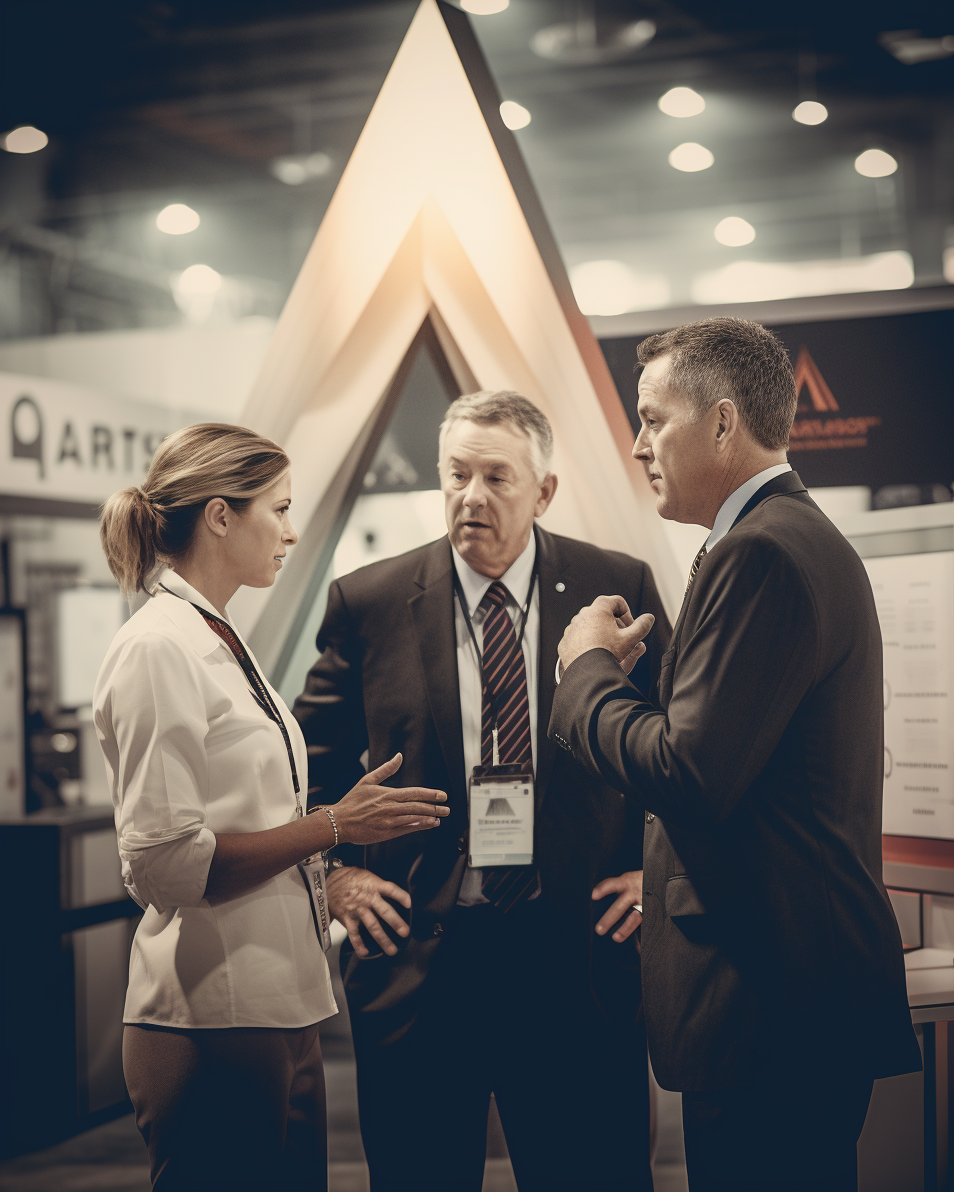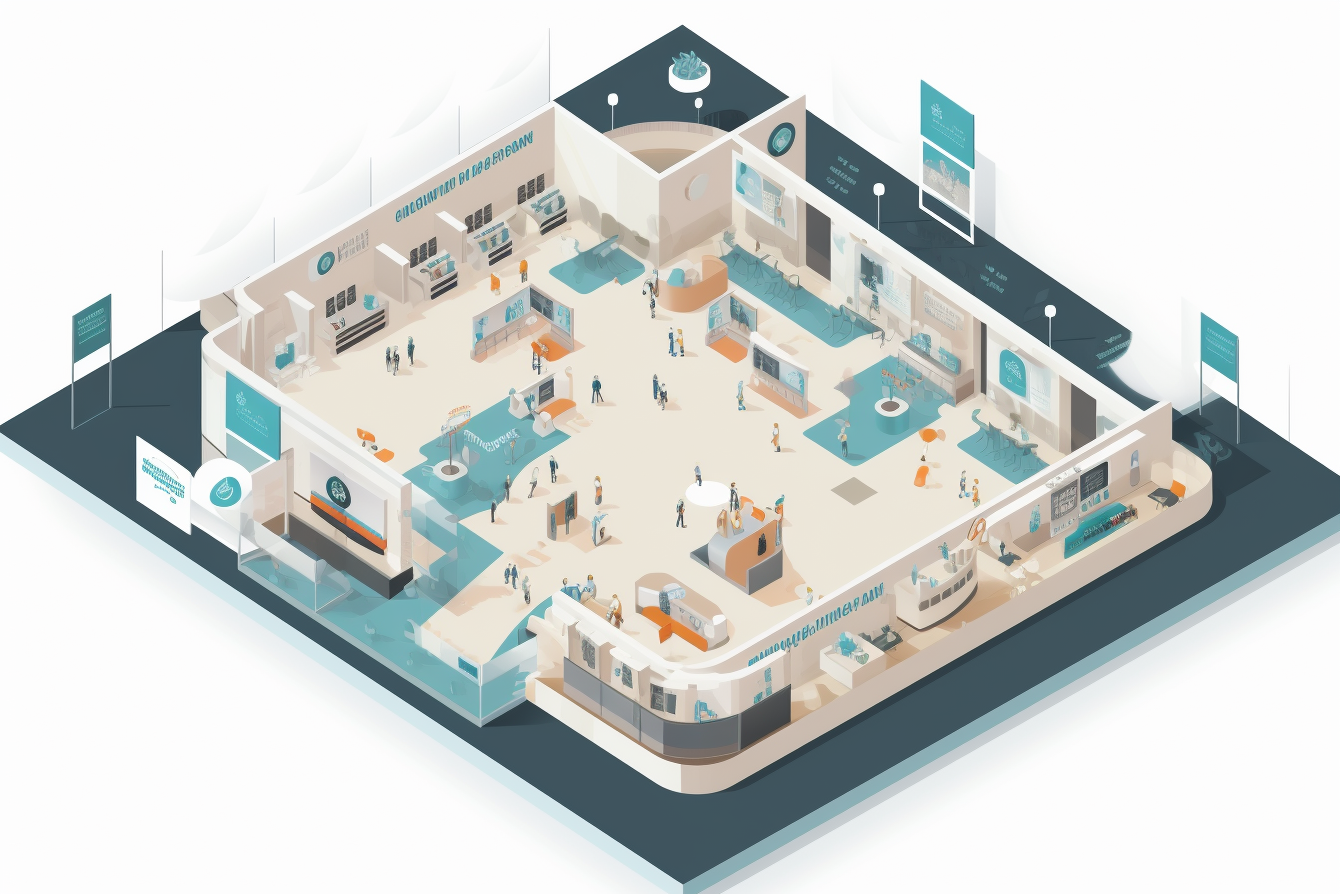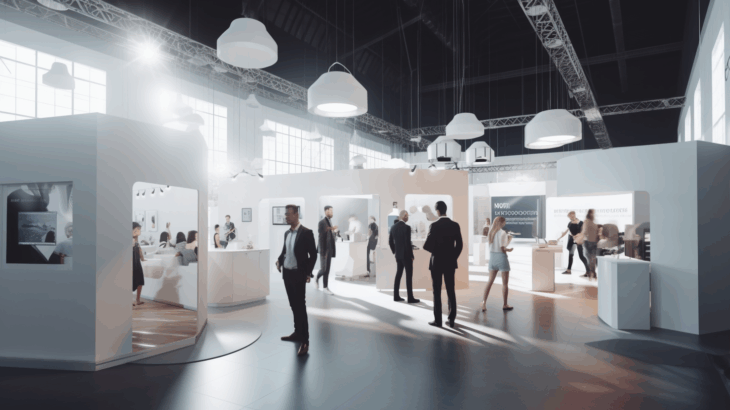In a sea of fluorescent lights, branded backdrops, and badge-scanning chaos, one question matters more than any other at a trade show:
Why do some booths attract crowds while others get passed by without a second glance?
It’s not just about budget, brand name, or booth size. The difference often comes down to human behavior, and whether your booth design influences it.
Understanding the psychology of engagement is a hidden advantage most exhibitors overlook. Let’s explore what makes attendees stop, stay, and engage.

1. First Impressions Happen Before You Speak
Attendees form impressions in seconds — often before they consciously realize it has happened. In fast-paced environments like trade shows, those judgments occur even more quickly.
Your booth needs to communicate three things at a glance:
- Approachability: Is the space open, inviting, and easy to enter?
- Clarity: Can attendees understand what you offer without needing to ask?
- Energy: Do your booth staff appear alert, welcoming, and engaged?
Layout and body language speak louder than branding. Even standing at the front of the booth instead of sitting behind a table can dramatically shift how approachable your space feels.
For more on pre-show preparation, read How to Choose the Right Trade Show Staff for Your Brand.
2. Movement Draws Attention, but People Create Connection
Our brains instinctively notice movement, which is why booths with rotating screens, live demos, or interactive elements naturally attract attention. But while motion draws the eye, it doesn’t hold it.
Human connection creates authentic engagement.
A well-trained product specialist or brand ambassador provides the warmth and trust that even the best touchscreen can’t replicate. Eye contact and a smile often become the real reason someone steps in and stays.
These visible human interactions trigger the social proof effect. When attendees see others engaging with a booth, they’re more likely to join in themselves. A staffed, active booth builds that sense of momentum and credibility.
3. Engagement Happens in Micro-Moments
Think of each attendee interaction as a series of small yeses:
- Will they glance over?
- Will they walk closer?
- Will they pause?
- Will they enter and stay?
Each of these moments creates an opportunity to engage or lose attention. The most effective booths optimize for every step.
That could mean placing someone at the edge of the booth to offer a casual welcome, or using a simple interactive prompt (like a quiz or scan-to-win) that encourages quick participation without pressure.
Removing friction at each moment helps more visitors move naturally from passive observers to active participants.

4. Reduce Mental Load to Increase Trust
Trade shows are chaotic by nature, filled with noise, motion, and competing demands for attention. In such an environment, clarity becomes your greatest advantage. When messaging is easy to process, it builds confidence and trust.
Yet many booths try to say too much — with cluttered signage, multiple calls to action, and competing visuals. This overload slows decision-making and weakens engagement.
Instead, focus on:
- One clear benefit statement visitors can understand in seconds
- A single visual focal point that draws people in
- Aligned messaging across signage, screens, and staffing
This concept, known as cognitive fluency, refers to the ease with which the brain processes information. The easier something is to understand, the more credible it feels.
5. Your Team Is the Experience
Booth design gets attention, but booth staff create the experience. No layout or technology can replace the impact of a well-prepared, personable team.
The best booth staffers:
- Know how to read body language
- Approach confidently without being pushy
- Qualify interest with subtlety
- Adapt quickly to different personalities and roles
They don’t just pitch your product; they guide visitors through the experience. Even small gestures can make a big difference. Greeting attendees by name, standing with confidence, and making warm introductions often turn a quick conversation into a lasting connection.
People remember how they felt more than what they saw.
6. Emotional Connection Outperforms Gimmicks
Flashy giveaways and stunts can attract attention, but they rarely build meaningful brand recall. What creates lasting impressions are experiences that feel personal and relevant.
Ways to foster emotional connection in your booth:
- Share short, powerful customer stories that connect your product to real-world outcomes
- Use storytelling throughout the booth experience: on signage, in conversations, and during demos
- Create moments that make visitors feel seen, understood, and valued
Emotion drives memory. If your booth evokes curiosity, surprise, or empathy — not just interest — you gain more than foot traffic. You build lasting loyalty.
Final Thought
Trade show success doesn’t happen by chance. It happens by design, when every element of your booth reflects how people think, feel, and behave.
Exhibitors who understand the psychology of engagement consistently outperform those who focus only on logistics. When you connect with people first, results follow.
